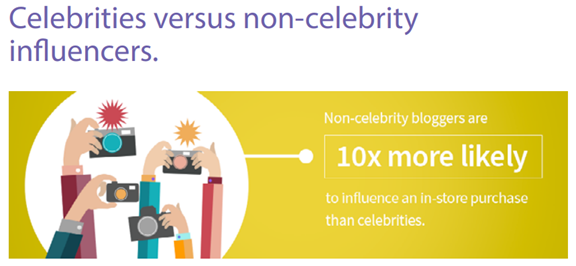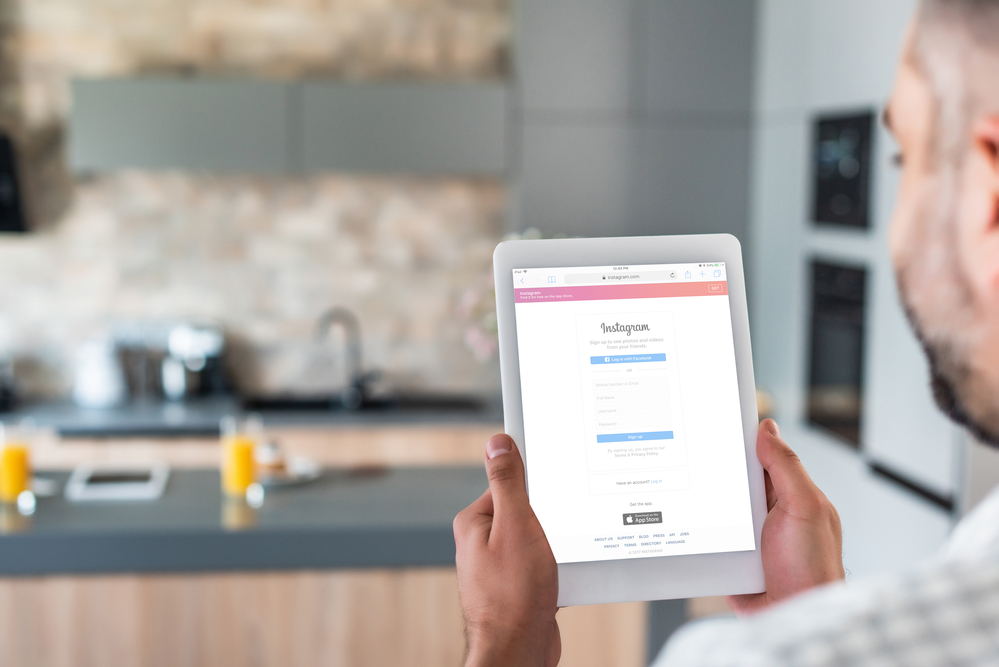There’s nothing like free advertising.
Yet for whatever reason, not many businesses take advantage of what’s out there.
Free comes in the form of social media post, updates, and visual aids. Sure, plenty of businesses use Facebook. They might even post to Twitter. But one of the biggest blunders is not taking advantage of a powerful selling platform: Instagram.
Instagram is a visual-based social media service, which is perfect for sharing the latest product releases from a company. Yet a single post has the potential to connect with a viewer far better than most other social media accounts out there.
It doesn’t take much, but by posting shoppable posts on Instagram a business can see a sizeable boost in its e-commerce sales potential.
Get Approved For Shopping on Instagram
Before it’s possible to post shoppable post on Instagram it’s important to be approved by the social media giant.
Now, not all who post shoppable posts on Instagram are compliant with the social media service’s requirements. In fact, most celebrity posters who promote other products are not compliant. According to Media Kix, seven percent of all celebrity posts on Instagram are sponsored, yet 93 percent of these posts are not compliant with Instagram’s shoppable post requirements. In fact, on a given year, a celebrity will post 58 noncompliant posts compared to three compliant posts.
(Source)
This doesn’t mean the average business should disregard Instagram requirements though. The social platform may look the other way when it comes to a celebrity with tens of millions of followers. It is less likely to do this with a small business. Should Instagram determine a small business fails to meet sponsored post standards it may shut down the account altogether.
What are the steps to being approved? A business must sell physical goods and the Instagram account must be set up as a business profile (not a personal profile). The profile must also be connected to a Facebook catalog and managed through Facebook Business Manager, the company’s business page, or through an e-commerce platform like BigCommerce or Shopify. According to Instagram, once all of these requirements are checked off it will review the account to determine whether it approves the ability to create shoppable posts on Instagram.
One of my strongest recommendations for setting up your Ecom store is Shopify, it’s the software I use to run my business. If you buy through my link please note that I am compensated.
Create a Facebook Catalog
Facebook owns Instagram. Much like Google wants businesses to take advantage of its offered tools, the same holds true with Facebook. That is why Instagram requires business accounts to create a Facebook Catalog in order to list goods.
For businesses that already have a catalog this step is already done. However, for a business that is just starting up or doesn’t yet have a catalog page, the creation process is straightforward (although potentially time-consuming, depending on the number of products a website offers).
To create a Facebook catalog a business must create a Business profile. From there, they need to log onto their account, click the account tab and then choose “Catalogs” from the Data Source portion of the pull-down menu.
(Source)
Facebook will then walk through the creation of a list and what is needed to import product visuals and information (this process will vary depending on if the information is listed on a company website or through an e-commerce platform like Shopify).
Tagging Products
Once the Facebook Business Manager catalog is up and running it’s easy to begin posting visuals and offering shoppable features within the post.
After snapping a picture and opening it up on Instagram, there is a “Tag Products” option within the New Post upload page. After selecting this Instagram will load the Facebook catalog. The individual posting on behalf of the business can then choose then tap the product on the image and select the same product from the catalog.
(Source)
After saving everything and making the post public, any follower who comes in contact with the post will be able to tap on the image and instantly see the product listing and the price of the product. Should they decide to pursue potentially buying the product all they need to do is select the displayed product link. This will open the user’s Facebook app (or the Internet browser, if the link is connected through Shopify or another e-commerce platform) and automatically transport the user to the product’s storefront page.
Most Customers are Turning To Social
Customer outreach and Internet marketing have dramatically evolved over the last decade. Connecting with potential clients has shifted from Internet advertisements created for a desktop experience to ad spots designed for mobile platforms and social media accounts. According to Hootsuite (2018), 75 percent of Instagram users now take action after seeing an advertising post on the visual social media service. In terms of interaction potential, Instagram leads in this category and has surged past others such as Twitter and Facebook.
(Source)
Instagram users are not afraid to follow businesses on Instagram. According to the same Hootsuite research, 80 percent of all users on the platform follow at least one business on Instagram. With 25 million business profiles on Instagram there are plenty to choose from, and with 200 million users visiting at least one business profile every single day, it demonstrates the value of having a business page.
Instagram is an extremely powerful selling tool. Those who use Instagram are more likely to make a mobile purchase. 70 percent of Instagram users have been found to make more mobile purchases than those without Instagram, and a full third of account users have made a purchase directly through their mobile phone. For businesses looking to boost their mobile sales, Instagram is the platform to take advantage of.
Instagram Is The Primary Social Media Platform For Shoppers
Instagram might not have as many overall users as Facebook, but when it comes to shoppers following company brands, no other platform comes close to the power of Instagram. According to Business Insider (2017), in 2016, luxury brands had 180.9 million Facebook followers, compared to Instagram’s 182.4 million. At the time, the two social platforms shared similar numbers. However, in 2017, this took a dramatic change. Facebook saw it’s numbers grow to 188.1 million luxury brand followers, but Instagram surged to 281.6 million. More people follow luxury brands on Instagram than on Facebook and Twitter (94.4 million) combined.
(Source)
Instagram doesn’t stop with just luxury retail brands either. Of all the social media platforms, it influences more online shopping than any other brand, which is why it is so important for a business to establish itself on Instagram and to grow and nurture its following. Lendedu (2018) reports that 52.9 percent of Millennials say Instagram influences them to make a purchase online after seeing a product advertisement or post. This number dips to 31 percent for Facebook, 11 percent for Twitter and five percent for Snapchat. This, again, makes Instagram a more valuable social media influencer account than all other social media platforms combined.
(Source)
So while it is still important to maintain a Facebook profile (if, at the very least, to maintain a Business account in order to upload product catalogs to Instagram), in terms of influencing customers and increasing sales, no other platform out there can compete with Instagram.
Social Influencers Come in Many Forms
Social influencers have the power to drive more traffic to a business page through a social media post. According to Social Bakers (2018), there are four different kinds of influencers on platforms like Instagram: non-friends, celebrities, distant friends and close friends.
Naturally, recommendations from close friends and family will always prove the most beneficial, but these are not influencers a business can target for widespread appeal. Instead, businesses will need to market through the company profile itself and through the aid of social influencers and celebrities.
23 percent of people said brand profiles influenced their decision to make a purchase. This number increases to 31 percent when a celebrity posts an influential recommendation of a particular product or service.
However, while paying a celebrity to share posts on his or her own Instagram profile, it doesn’t generate the highest return on investment. Instead, this comes in the form of non-celebrity bloggers.
According to Collective Bias and reported on Medium (2017), non-celebrity bloggers are 10 times more likely to influence a product purchase than that of a celebrity. There are several reasons behind why this is the case. First, when a celebrity posts a product those who follow the celebrity already know this is an advertisement. They understand the celebrity is receiving payments to post the product. With a non-celebrity blogger though, these are individuals who write, post and comment on products for a very specific industry or niche.

(Source)
Due to this, those who follow them do so because they respect their opinion and insights. So while a product post from these non-celebrity social influencers may not reach the same number of followers, it has a substantially higher chance of converting viewers to buyers (and will often cost far less than a celebrity personality on Instagram).
In Conclusion
Not all forms of online advertising cost money. In fact, Instagram, one of the very best options out there, is waiting for businesses to take full advantage. Instagram opens up a world of potential for any company interested in selling its products online.
With the aid of shoppable posts, followers of a business profile can instantly see what’s new, what’s for sale and follow a provided link within the image back to the company storefront. With the power of visuals, a company will see a dramatic improvement in its ability to connect with customers who are interested in mobile shopping, all without spending a cent. That is exactly why now is the time to boost e-commerce sales potential with the aid of shoppable posts on Instagram.










